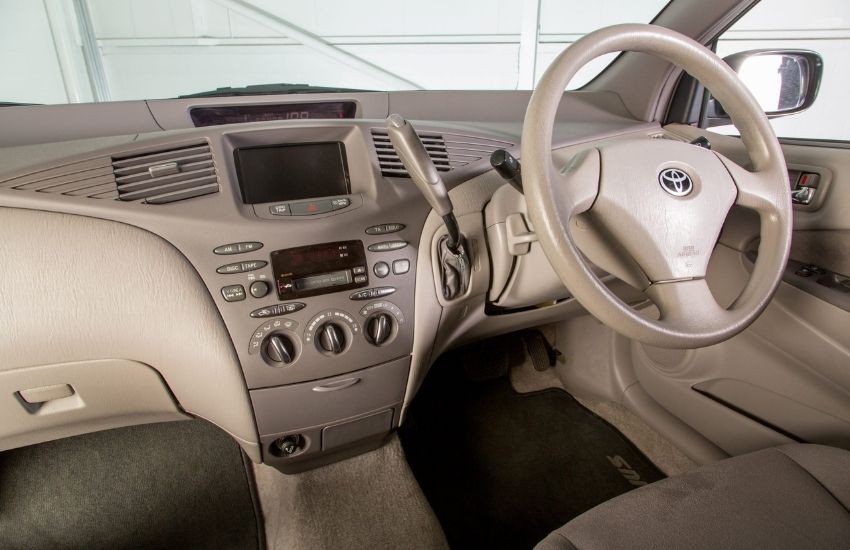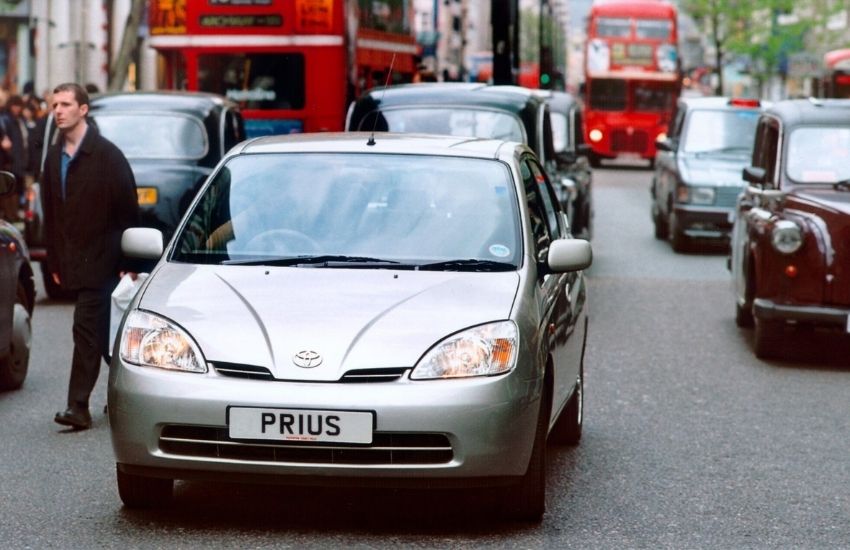Author: Antony Ingram
Photography: Toyota
Mere mention of the Toyota Prius is enough to draw grimacing, grunting and grousing from some car enthusiasts. For much of the model’s existence it’s been seen as the anti-car, a method of transport with all emotion and entertainment and interest stripped away, leaving only a set of wheels to dispassionately power you around.
Even when the Prius was at its pomp, that view was a little unfair, and almost certainly exacerbated by Top Gear-era Clarkson, the presenter and the show treating the Toyota as a bit of a punching bag. One wonders whether we ever got James May’s take on the car, because one thing the Prius has always been is mechanically interesting, and mechanical interest is May’s bread and butter.

The car you think of when someone says “Prius” probably isn’t the one we’re gently nudging forward as a future classic however. For most, a Toyota Prius – as in the one featured now and then on Top Gear, the one celebrities were tripping over themselves to be seen driving in Los Angeles – is the slightly dopey-looking metal slug introduced in 2003.

Occasionally known by its chassis code XW20, the second-generation model sold comfortably more than a million units, and you can still see ’em today, mostly in ropey-looking minicab form, somehow braving several hundred thousand miles at the hands of some of the least mechanically-sympathetic drivers on the roads.
We’re concentrating on the original model though, known as the XW10. Not many celebs flashed a smug smile in these goofy little saloons, its only Top Gear appearances were on “old” TG (in between the Clarkson eras), and the styling was significantly more conventional than the slick, aero forms that followed.
Being first, it has the historical angle nailed. Not just the first Prius, but the first volume-production hybrid car, having been introduced in 1997 in Japan. In the UK, the original Honda Insight (another future classic) actually beat the Prius to market, but in its home market the Toyota pipped it by a couple of years.
While the Honda was the more enthusiast-friendly car, with its manual gearbox and two-seat coupe body, it’s unsurprising that the Toyota Prius set the template for hybrids to follow. It was no more expensive yet could accommodate four and a decent amount of luggage, immediately endearing it to families, who would then discover a car no more difficult to operate than say, an automatic Yaris. Yet no Yaris could cruise around for short distances on electric power alone – the original Prius was among the first cars to plant a seed as to what an electric future might be like.


Mechanically, it used a 1.5-litre petrol engine, whose power and torque combined with an electric motor through a planetary gearset, that could blend the efforts of both power sources, or use the engine to spin the motor to charge the battery, or turn off the engine and let the E-motor do the work. Or, if you lifted off, it could harvest energy that way too, the motor becoming a generator – the sensation of regenerative braking being another original experience for most drivers.
It wasn’t especially powerful, at 71bhp, and with 1250kg to lug around, not quick either, taking 13.4 seconds to hit 62mph and not quite managing 100mph flat out. But by the standards of the late 90s, combined fuel economy of 57.6mpg and more notably, urban economy of 61.4mpg were miles ahead of anything that wasn’t a tiny, tinny, rattly diesel. In town, the engine barely ever seemed to awaken, and deft driving could realise figures even higher than those in the brochure.
The cabin had a kind of homely comfort, with an inoffensive grey-beige colour to basically everything in sight, soft seats, and an expansive dash with central instruments. In the centre was a screen, not for the stereo or sat-nav, but purely to show you what the drivetrain was doing at any given time. Getting the engine and E-motor to do as you wished almost became a game, as did hitting the highest-possible MPG figures on a drive. Who said driving a Prius couldn’t be engaging? Not all driving is about clipping apexes or finessing the perfect gearshift (the Prius, predictably, was an auto, the planetary gearbox behaving like a CVT).

As it arrived in the UK in 2000, the Toyota Prius is now more than quarter of a century old here, and to us that puts it in prime Festival of the Unexceptional (FOTU) territory. The styling treads a fine line between distinctive and derivative, it is largely forgotten about, and these early Prius are now quite rare in the UK. If you’re of a certain automotive persuasion, it’s the kind of car that’ll stop you in your tracks as it rolls onto the field at FOTU.
But the car’s back-story is fascinating, and its impact on modern motoring is unquestionable. Being a Toyota, it’ll last as good as forever too, so it’ll be as much a classic in another 25 years as original fuel-sipping superminis like the Honda Civic and Renault 5 are today.
The Prius is just one example of a car quietly gaining classic potential – our guide to the next modern classics explores several others following a similar trajectory.
Do you think the trusty Toyota Prius is a future classic? Whether you love them or hate or loathe them, let us know in the comments below.
Classic car insurance from Hagerty
Keep your classic on the road with expert classic car insurance built by car lovers, for car lovers. Rated ‘Excellent’ on TrustPilot.










Let’s start with my introduction to the vehicle. I never owned one, however I was Introduced to my close friend and also to my cousins later model. Oh, and before the former two related ones, we rented one in Northern California for a week. Being of an engineering background I was intrigued to it’s technology. We took it everywhere. We really liked it. So when we came back south we drove both friends & cousins Pris’s. We shared the Toyota reliability aspects, we shared the economical aspects & thought someday we might purchase “at least” a hybrid. We’ll, many years later living far away without a driver’s license, & dependent on public transportation ( free to pensioners), I still would purchase a Pris.
My friend with her early model Pris was recently involved in an accident whereas the bodyshop is telling her insurance company it is totaled. The insurance company is creditng her 3,500 for uninsured mortorists coverage and she is now looking to purchase a New Pris. I am 11,000 miles away & I can only suggest…
I personally feel that the unnamed body shop is scamming her. The received a check from the insurance company to repair the car. Then they rendered it totaled. The don’t return phone calls, & now they want storage fees. Sorry for the tangent,
Yes, I believe the first Toyota Pris will go done in history as a classic, & a Technological marvel.
You’re legging my pull! A ‘classic’ has to have style and some craftsmanship; however clever and practical the likes of the Prius might be, it’s just an item of white goods, like your washing machine. The only future classics in the last 25 years are the real exotics, which may not be very practical but at least have individuality.